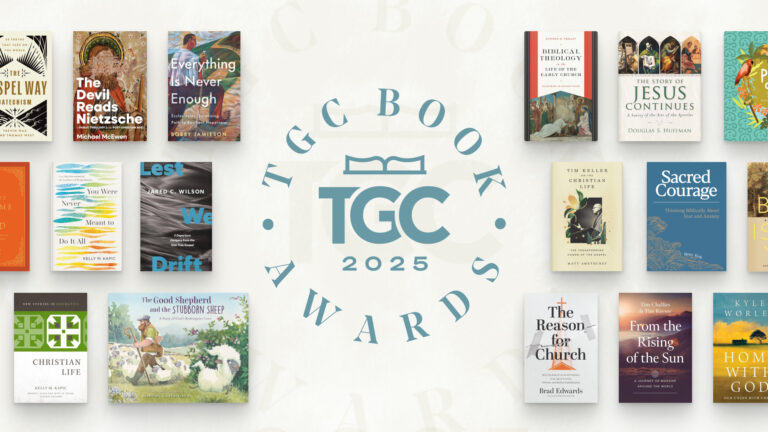In this series, youth workers explore trends in culture, technology, and economics. They consider how we prepare young people for the world they will inherit as adults, in such a way that they remain faithful to and fruitful for Christ. To learn more about the contributors and how Rooted advances grace-driven youth ministry, check out their site.
About five years ago a video appeared on YouTube called “Shift Happens.” The video demonstrated how rapidly information was disseminated to, and assimilated by, this generation of young people. Even for those of us working with the next generation, “Shift Happens” painted a surprising picture of our technological age. Operating on the assumption that most, if not all, the facts in the video were correct, I began to ask questions about the value of brick and mortar educational institutions, the effectiveness of traditional preaching methods, and the effect of the upcoming waves of technological advances on the next generation. However, a half-decade later, I realize that perhaps the greatest influence of technology and its byproducts like social media is actually relational and not informational.
Much is being currently written about the demise of relationships due to social media, so we need not rehash those arguments here. The greater concern for the church should be how to effectively disciple the child of the future by molding an inherently relational process (discipleship) into something that fits into the new relational paradigms emerging with the next generations.
Whether you respond to that last statement negatively, positively, or with indifference, let me caution us all to not fall into the trap of using our own generation as the standard by which we judge the rising generation and their understanding of relationship. In fact, if the findings of the National Study of Youth and Religion and the books that followed the study are accurate, we could easily conclude that the next generation found our relationships lacking and thus are searching for better expressions of relational intimacy.
What if—instead of leading to the demise of relationship and discipleship—technology and its byproducts are uniquely preparing the child of the future to more effectively fulfill the Great Commission?
Global Youth Culture
Eric Larsen, director of Global Youth and Family Ministries and adjunct professor of next-gen ministry at Covenant Seminary, believes that the rising generations are part of a growing global youth culture (GYC). He points to globalization, the homogenizing of the world into one macro-culture, the effects of postmodernism, abandonment of the next generation by adults, and high mobility and technology, as contributing factors for the development of the GYC. A shift in age demographics has taken place during the last five years that I believe adds credence to this idea of a GYC. According to the U.S. Census Bureau more than half (roughly 3.6 billion) of the world’s population is younger than 30. We must also observe related data that suggest adolescence is now extending from 10 years old (with the onset of puberty for some females) to as late as 30 years old (for “emerging adults” who are either choosing not to or are incapable of launching into adulthood). Thus, we should conclude that this GYC is a geographic mission field that the children of the future are positioned to engage through their own paradigms for relationships, and not ours.
I assume that most evangelical Christians understand that a time is foretold in Scripture when the heavenly expression of the church is a multicultural community gathered in worship (Revelation 7). I also assume that, for most evangelicals, the earthly expression of the church that they understand is primarily that of a homogeneous community worshiping together. The child of the future growing up in the GYC will push and hopefully lead the church toward more accurately mirroring the heavenly expression of the church. After all, a teen connected through the social media with another teen in some other part of the world may eventually question how social media seems to break down the walls that separate us culturally, and bring people together relationally, in ways that they do not see the gospel doing in our churches.
The thought of Jesus sitting at the right hand of the Father, anxiously wringing his hands because the child of the future is trying to figure out how to do relationships in 140 characters on Twitter, in seven-second video clips on Vine, or in pictures posted on Instagram, seems preposterous to me. In the same manner, it would be preposterous (and disastrous) for the older generations not to give the child of the future the biblical grid to know how to navigate the potential hazards found in the ever-changing landscape of social media relationships. Instead of devaluing these new types and layers of relationships found within the GYC through social media, the child of the future needs adults who will help them know how to move the gospel into those relationships. Conversely, the adult of the future will need the child of the future to lead them into the GYC. Adults need help understanding the language, cultural nuances, and relational intricacies found in the GYC.
I am excited that a 15-year-old in Yazoo City, Mississippi, could tweet gospel truth that is retweeted by one of her followers in Seattle, Washington, that shows up in the feed of one of his followers in Cape Town, South Africa, and then could end up being seen by a student who follows him in Nagoya, Japan. In a matter of minutes that girl in Yazoo City can missionally engage the GYC in a way that seems lacking according to our models of missions, outreach, and discipleship.
I have sneaking suspicion that Jesus is okay with this trend.
Free Book by TGC: ‘Before You Lose Your Faith’
 Many young people are walking away from Christianity—for reasons ranging from the church’s stance on sexual morality, to its approach to science and the Bible, to its perceived silence on racial justice.
Many young people are walking away from Christianity—for reasons ranging from the church’s stance on sexual morality, to its approach to science and the Bible, to its perceived silence on racial justice.
TGC’s book Before You Lose Your Faith: Deconstructing Doubt in the Church is an infusion of hope, clarity, and wisdom in an age of mounting cynicism toward Christianity.
For anyone entering college or the workplace and looking for a timely reminder of why Christianity is good news in a skeptical age, make sure to get your FREE ebook Before You Lose Your Faith today!





























